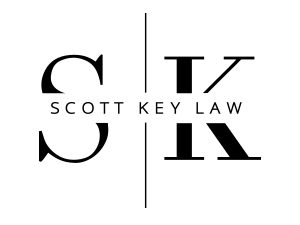In his blog yesterday, Kendall Gray referenced the Rules of the Georgia Court of Appeals, citing it as “a jurisdiction with rule-mandated ugliness.” Kendall’s blog post comes at a time when I am reading Typography for Lawyers by William Butterick. I’ve learned a great deal about fonts and layout and was all excited about using my new-found knowledge on a future appellate brief when I re-read the Georgia Court of Appeals Rules and found, well, “rule-mandated ugliness.” But it’s not quite as bad as it sounds. Here’e the language from Rule 1(c) of the Rules of the Georgia Court of Appeals:
All documents filed with the Court shall have no less than double spacing between the lines including quotations and footnotes. Letter spacing and type or font size shall be no smaller than ten characters per inch. Notwithstanding the 10 characters per inch requirement, the Court shall accept in lieu thereof Times New Roman Regular 14pt.
Also, there’s a little more good news. Now, to the issue of margin. According to Rule 24(c), there must be a “margin of not less than two inches at the top and a margin of at least one inch on the sides and bottom of each page.”
Matthew Butterick recommends two-inch margins, which you could do under the Rules of the Georgia Court of Appeals. He also recommends moving away from system fonts, which you can do as long as you meet the 10 characters per inch requirement. Of course, you still have “rule mandated ugliness” because you must double space. Butterick recommends spacing in the neighborhood of 1.2 to 1.3. inches. Which sounds odd if you’ve never written a brief like that. But it’s really not so odd. Are you reading a novel right now or a new non-fiction book? Take a look at it. I bet your margins are at least two inches, and I can pretty much guarantee that the lines aren’t double spaced. Why? Well, for one, because the publisher wanted to keep you reading. Two, it’s a book and not a term paper. In fact, pull random books off your shelf. See any Times Roman 14? See any double spacing?
Why, you might ask, would the rules mandate ugliness. First, I believe Kendall is correct. The rules were likely originally crafted in the typewriter era. However, I suspect that there’s a little more to the story. I think the rules were likely amended at the beginning of the personal computing era. I’d be willing to bet that the courts got worried that there would be an attempt to manipulate how many words could fit on a page with those new-fangled computers.
Of course, there was a better solution. The Court could have provided a word count limit instead of a page count limit. But that was a little too easy, I suppose.
And I wonder if any lawyer really gamed the system or if there was fear back in 1982 that somebody might potentially try to game the system. You know how appellate lawyers are. We’re a bunch of James Dean types and that’s been the case for a long long time. It ain’t ever gonna change. When I decided to become an appellate lawyer, it was hard to focus. Women with a penchant for the bad boy heard that there was an appeals lawyer in town.
Scott Greenfield’s review is what actually led me to buy the book. He wrote this about briefs with a pleasing layout:
No, they won’t make a loser appeal into a winner, but like wearing a decent suit to court, or polishing your shoes, it’s one less detriment and one more benefit. Butterick’s point, and mine, is that there’s no good reason not to do it as well as it can be done.
If good typography is like a good suit, then a brief typed in conformity with the Rules of the Georgia Court of Appeals is a powder blue polyester leisure suit, with bell-bottomed pants, huge lapels, and a wide flannel tie. It was a great suit for the day it was written and great for a 70s party now. I’m just not sure I’d wear it to court.
Now, over at the Supreme Court, the look is a little more modern. You might not look out of place on the show 21 Jump Street. Supreme Court Rule 18 reads:
All filings shall be printed or typed with not less than double-spacing between the lines, except in block quotations or footnotes. Margins shall be no less than one inch at the top, bottom and sides. The type size shall not be smaller than 12-point courier font or 14-point Times New Roman.
The good news is that you can single-space block quotations and footnotes. The bad news is that they reference the courier font — literally the ugliest font ever made if you don’t count comic sans (which I don’t).
With all that said, you have some room to think about design and to make your brief stands out. Lawyers are a careful lot, particularly when sober. So, most will use the “example fonts” to play it safe. You may choose another that is the same size and be okay. Also, you can go for bigger margins to provide more white space.
And, if you think this is just kooky Mac user talk, check out the Rules of the United States Supreme Court (PDF), that hotbed of flashy design. In particular, check out Rule 33. Actually, check out the layout of the rules themselves. Mr. Butterick would approve. And there’s a word count limit, not a page limit. The things is, if your brief looked like the United State Supreme Court Rules, you would likely not be able to file it in the Georgia Court of Appeals. Though it was be the most readable brief in the stack.
If the United States Supreme Court Rules were a suit, it would look nice in court today.
But, in Georgia, it’s Ron Burgundy time. So, here’s hoping that the rules are modernized. Until then, stay classy Atlanta.


